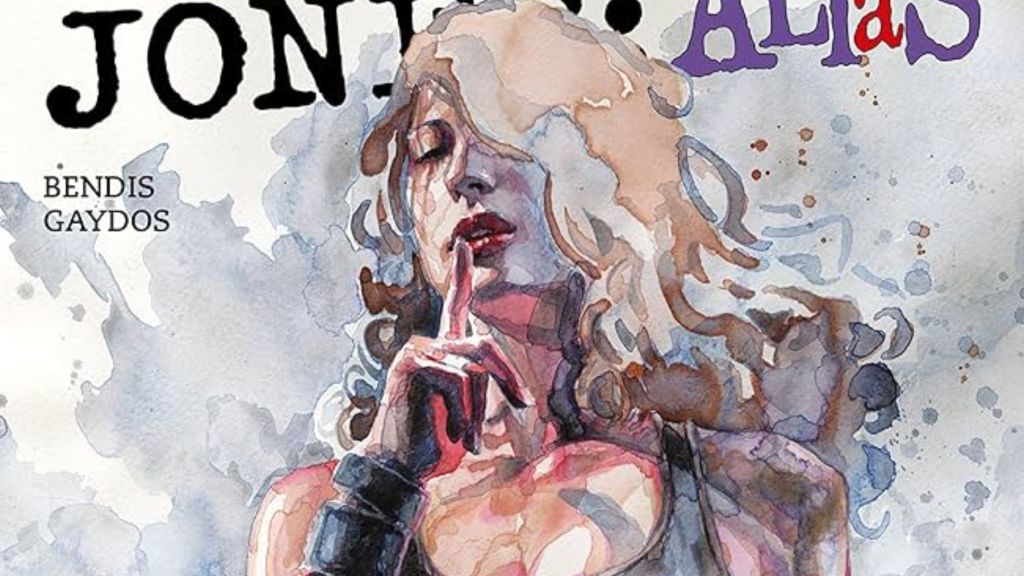Many modern superhero tales have tried to perfect the gritty and burned-out superhero format, to varying degrees of success. This brings us to a hit series from the 2000s, and we still need more of this style of comic. Jessica Jones: Alias was part of Marvel’s MAX Imprint, and as such was allowed to be a bit more mature (read: gritty and dark) than the typical superhero fare. The story hit hard from the start, creating a compelling story that lives rent-free in our heads decades later. More importantly, it delivered us a hero who felt human. Jessica, as portrayed in Alias, was human, flawed, traumatized, and working to find her path in life.
Videos by ComicBook.com
Jessica Jones: Alias first began publishing in 2001, though it’s safe to say this story still resonates to this day. Written by Brian Michael Bendis and illustrated by Michael Gaydos, Matt Hollingsworth, and Richard Starkings, Alias has long been hailed as one of the best noir series in Marvel. It’s certainly considered one of the best Jessica Jones tales, having a significant influence on Netflix’s take on the titular character.
Complex, Messy, and Raw Portrayals

Jessica Jones is realistically a hard person to love, thanks to her sarcastic and angry mannerisms. But here’s the thing – her personality reflects her trauma. Marvel didn’t force her to fit a mold, trying to force her to be this perfect character for the fans. Instead, she was portrayed as a deeply hurt character, and she was allowed to let that hurt bleed through the pages. That she was able to work through that trauma and find new ways to save the day gave readers more reasons, not less, to respect her.
Life is messy, and anybody who says otherwise is probably lying. Jessica Jones: Alias tells it as it is, letting Jessica battle to understand her personal trauma while dealing with present complications and problems. It’s complicated, and sometimes it’s hard to see Jessica’s self-loathing so clearly splashed across the pages. However, seeing a hero portrayed as less-than-perfect is what makes her relatable, and people need to see this side of heroes.
[RELATED: Daredevil: Born Again Confirms Krysten Ritter Is Back as Jessica Jones]
Striking a Careful Balance

There’s a natural problem in portraying characters who have gone through traumatic experiences. These stories need to be told because they highlight a reality that sometimes occurs, providing readers with a vital perspective. That said, creators have to be careful to avoid exploitative behavior or otherwise creating content that glamorizes these actions. Jessica Jones’ story has persistently tackled complex themes including sexual assault, gaslighting, addiction, and the consequences of violence. Naturally, Killgrave is part of Jessica’s past, but Jessica Jones: Alias makes one critical point clear: his actions do not define Jessica Jones. Her entire journey is about learning that lesson, and readers can see her sometimes struggle to come to terms with this, as she learns to let people back into her life.
This isn’t the only balance Jessica Jones: Alias had to contend with, as it’s also trying to tell a different type of superhero story. Yes, once upon a time, Jessica dreamed of becoming an iconic hero. Those days are behind her, resulting in a more jaded character that has little to no interest in stereotypical superhero life. In other words, she’s a superpowered entity living on the outskirts of Marvel life, cutting away a subset of the universe for herself, and redefining expectations as she goes.
[RELATED: After Daredevil: Born Again, Marvel Must Bring the Other Defenders Back]
Distinct And Memorable Art Style

We can’t have an open and honest conversation about Jessica Jones: Alias without also discussing the artwork. The series has a strong dichotomy in art styles, but it works shockingly well with the character and her story. The covers, created by David Mack, are muted yet striking watercolor designs, providing an almost softer look at the world. Meanwhile, the artwork inside, created by Michael Gaydos, is darker, murkier, and rougher. Gaydos illustrates the version of Jessica Jones that she presents to the world, tired, exasperated, and edgy. Together, they portray two sides of the same character.
The artists within Jessica Jones: Alias leaned into the story Bendis was trying to tell. As such, Jessica is not frequently portrayed wearing classical superhero garb (minus her flashbacks, but that’s a different story). She’s often seen wearing beat-up hoodies, jeans, and other articles of clothing that have clearly seen better days. This is about more than how Jessica presents herself to the world, as her wardrobe is an act of camouflage essential for her job.
Beyond Jessica Jones: Alias

It goes without saying that Jessica Jones: Alias had a significant influence on the character going forward. Her story has shifted tonally, including her portrayal in the Netflix series. A few changes were necessary, but that’s the adaptation process for you. Now, readers are anxiously awaiting to see what changes Jessica Jones will face when she finally makes her Marvel Cinematic Universe debut. One thing is certain: the world will always need heroines like Jessica Jones.








